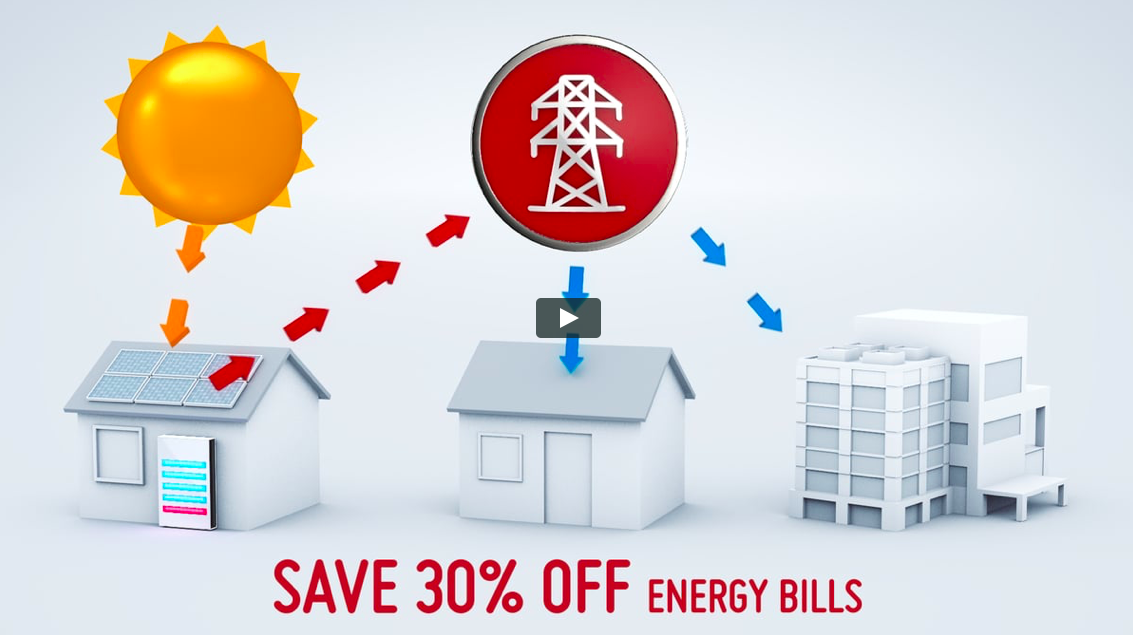The Israel-based PV power electronics supplier has launched a virtual power plants (VPP) solution. The system will use aggregative control and data reporting to pool large numbers of PV systems, distributed electrical storage, and load management together into a VPP.
VPPs are emerging as a tool for grid operators to optimize the performance and costs of electricity networks, where there are high levels of PV power penetration. Deploying a VPP can overcome challenges for grid operators and energy retailers, while at the same time, effectively utilizing distributed generation resources, thus creating a win-win situation for grid operators and residential PV array owners.
Solar PV requires resilient grid
“As there is more distributed generation, it becomes harder to stabilize the grid,” Lior Handelsman, SolarEdge’s VP Marketing and Product Strategy VP and co-founder told pv magazine. “This will actually help the grid. When there is no conflict then the proliferation of PV will be much faster and much higher.”
With the proliferation of residential PV in many markets, grid operators and regulators globally have raised concerns about the fluctuating nature of PV production – such as reduced production during cloudy days and declining production in the evening, when air conditioning loads can be high. This causes high stress on the grid and requires costly investments into infrastructure.
In markets where there are highly volatile wholesale prices, the business case for VPPs is even greater, added Handelsman. Annual profits can be wiped out when retailers are forced to purchase extremely expensive wholesale power during times of extreme peak electricity demand.
“In this event, with our interface, the energy supplier can generate energy from multiple systems in order not to buy from the wholesale market,” Handelsman added. “They can avoid buying during the peak.”
For PV system owners, VPP concepts can deliver an additional revenue stream, more accurately aligned to the value of the asset. Fluctuations in the power output from a PV array can negatively impact amortisation periods for owners of PV arrays.
Additionally, solar power produced by a PV array is provided to grid at a fixed, and often regulated price, often not aligned to wholesale prices and real time demand.
SolarEdge reports its VPP solution is applicable to a range of solar inverter, battery systems, and load controls – and is not only restricted to the company’s own hardware.
“It is designed to control non-SolarEdge systems, thermostats, other inverters, batteries,” said Handelsman. “In some instances, we will need to develop new interfaces.”
VPPs eliminate the necessity for large infrastructure investments
A VPP solution deploys an algorithm that controls the power currents on the grid using data it receives from power optimizers, which monitor module performance in real time. The VPP will automatically asses and control whether the produced electricity should be fed into the grid, stored in a battery storage system, charge an electric vehicle (EV), or be used in the household appliances of the owner of the PV array, without going into the grid at all.
Loads, such as EV chargers or air conditioning units, can also potentially be controlled by the VPP algorithm – ramping down demand in peak times.
This capability can potentially supplant the need for expensive grid upgrades, to meet only a few hours of peak demand each year.
Grid services via storage and PV
SolarEdge claims the effects of its VPP platform are manifold and are said to benefit all stakeholders. By holding produced electricity in a battery storage system, when the energy prices on the market are very low, and selling it when prices are high, it significantly reduces amortisation period for the owner of the PV array.
Sourcing data from inverters and power optimizers of each array within a distributed network allows the system to proactively take measures and find the best possible way of directing currents in the grid. Issues regarding generation shortages or transmission bottlenecks, as well as frequency variations, can be mitigated in real time and grid resilience improved.
Decentralising control to local grids can be a decisive factor in achieving the next step in the proliferation of solar PV. Smaller networks can be monitored and managed in a more precise and matched manner. Local production peaks or shortages can be managed much more effectively on a local level, before entering the transmission grid. The services VPP’s provide eliminate grid operators concerns regarding the negative effects of solar PV power in the grid.
“We have huge experience in a) controlling and communicating with hundreds of thousands of systems and devices, and b) with these type of resources – smaller PV systems, batteries and load management sources,” said Handelman, setting out SolarEdge’s competitive position in supplying a VPP platform. “We are very experienced with these systems, control and communication with these multiple systems, and we are very good at developing technology. And all through that puts us in a good position.”
This content is protected by copyright and may not be reused. If you want to cooperate with us and would like to reuse some of our content, please contact: editors@pv-magazine.com.





10 comments
By submitting this form you agree to pv magazine using your data for the purposes of publishing your comment.
Your personal data will only be disclosed or otherwise transmitted to third parties for the purposes of spam filtering or if this is necessary for technical maintenance of the website. Any other transfer to third parties will not take place unless this is justified on the basis of applicable data protection regulations or if pv magazine is legally obliged to do so.
You may revoke this consent at any time with effect for the future, in which case your personal data will be deleted immediately. Otherwise, your data will be deleted if pv magazine has processed your request or the purpose of data storage is fulfilled.
Further information on data privacy can be found in our Data Protection Policy.